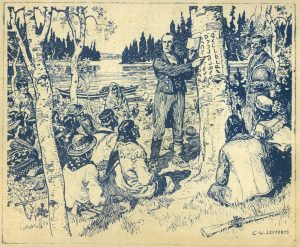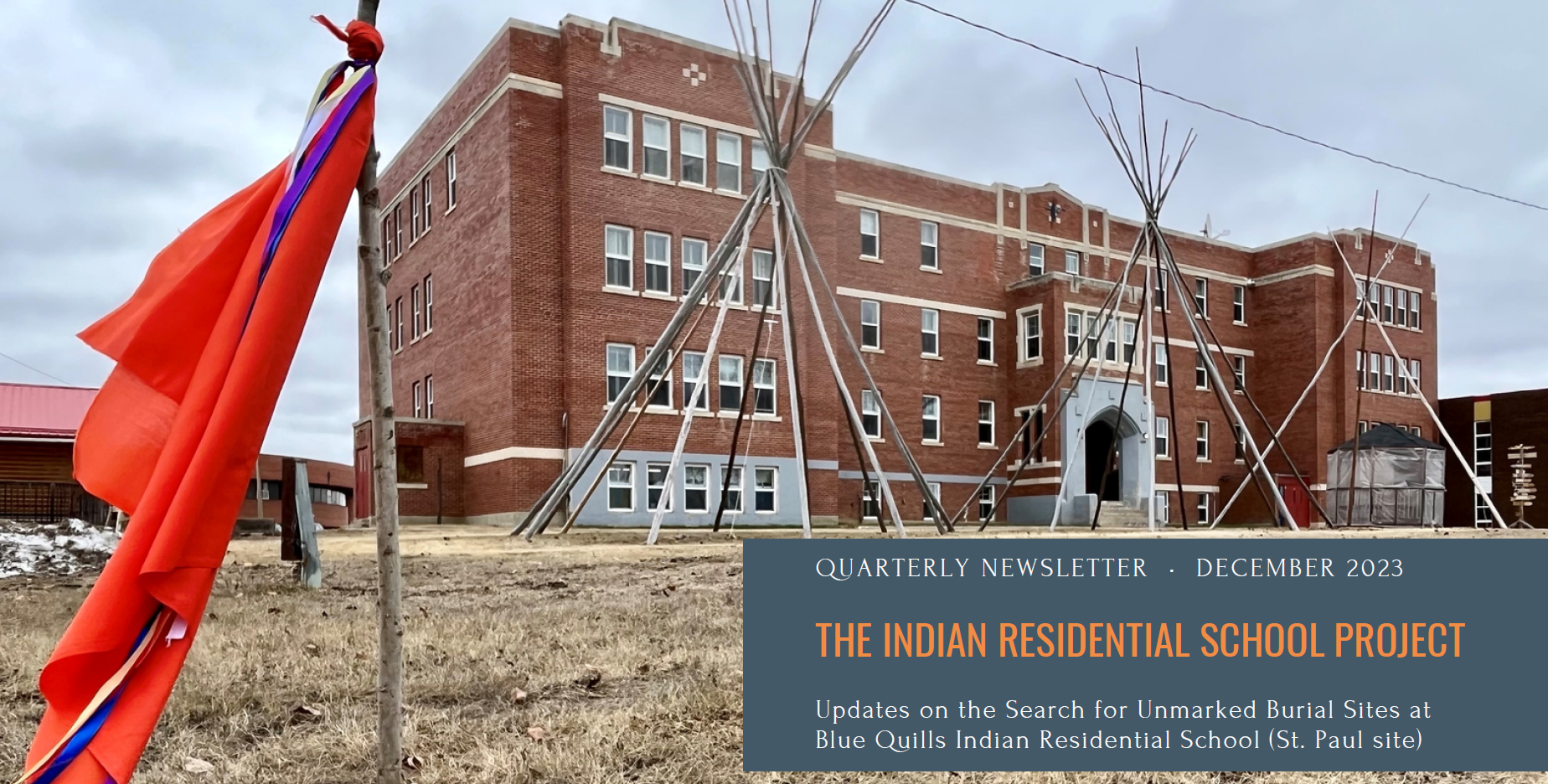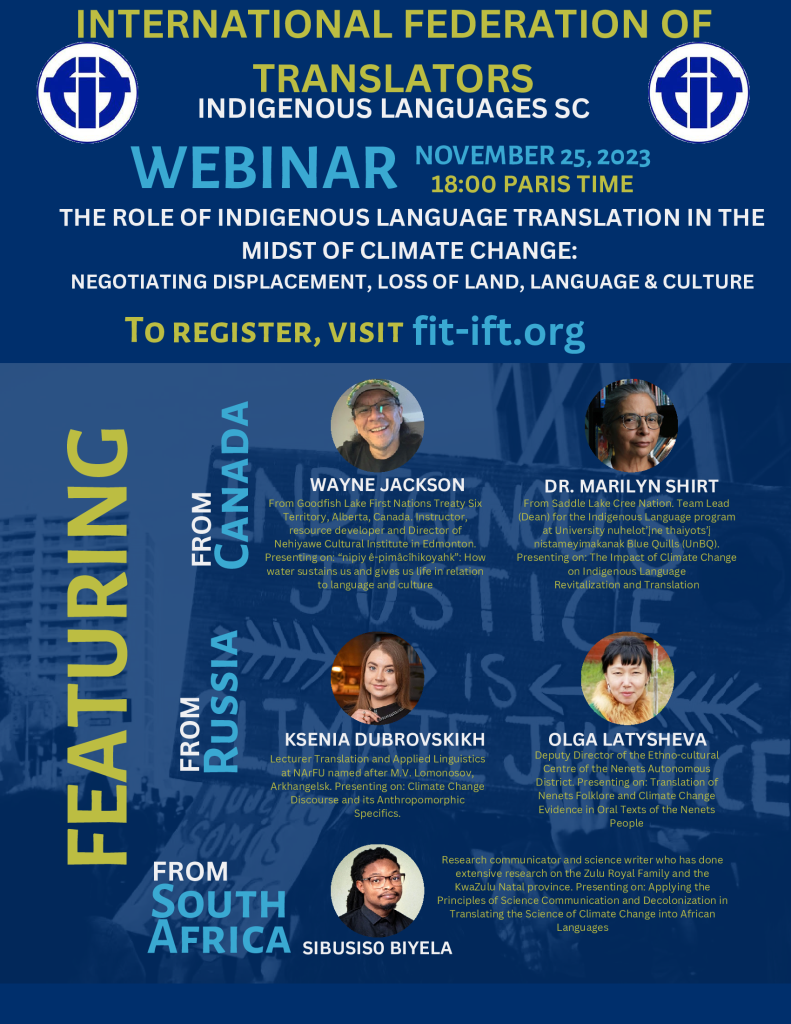The ATIA Indigenous Languages Committee is the first of its kind among the provincial associations and will be working closely with various Indigenous language professionals in order to design, develop, and pilot the pre-entry level, Associate-level and the Certified-level assessments and exam procedures. We are proud to be working with translators, interpreters, and language experts from various Indigenous communities across the province to begin developing the framework and procedures to enable translators and interpreters in Indigenous languages to become members of ATIA.

Updates, Information, and “In The News”:
Visit Calgary – Indigenous experiences in and around Calgary
– There are so many things to enjoy in and around Calgary, and to learn about the rich culture of Treaty 7. Including museums, the University of Calgary Campfire Chats, First Nations Dancers, Pow Wows, and more.
To learn more about Indigenous experiences in and around Calgary click HERE
Explore Edmonton – Indigenous Landmarks and Spaces in Edmonton
– Amiskwaciy Waskahikan (Edmonton), is home to many breathtaking Indigenous landmarks and spaces. Including ᐄᓃᐤ (ÎNÎW) River Lot 11∞, the Community Medicine Wheel Garden, and the Turtle Effigy at Louise McKinney Riverfront Park.
To learn more about Indigenous Landmarks and Spaces in Edmonton click HERE
Wind Speaker – Edmonton pro basketball squad set to host Indigenous Celebration Night
– Indigenous Celebration Night will be histroic, as it is the first pro basketball game to be broadcast in both English and Nêhiyawêwin. To read the article click HERE
CBC – Mi’kmaw lexicon expands with sports names for North American Indigenous Games
– There are now new sports terms in the Mi’kmaq lexicon, thanks to a team of translators with the North American Indigenous Games. To read the article click HERE
Government of Canada – Update on the words “Inuk” and “Inuit”
– In 2009, the Translation Bureau issued a recommendation on the use of the terms “Inuk” and “Inuit.” The Bureau has now published a new recommendation that reflects the current usage in 2023. To read the update click HERE
INAN – Indigenous Languages Study
– The Standing Committee on Indigenous and Northern Affairs reviews, examines and reports on issues affecting First Nations, Inuit and Métis peoples and northerners. To learn more click HERE
University nuhelot’įne thaiyots’į nistameyimâkanak Blue Quills – Language Programs
– Blue Quills offers three program levels in nêhiyawêwin (Cree language), whether you are looking for a short 1-year certificate, 2-year diploma, or a 3-year Bachelor of Arts in nêhiyawêwin, UnBQ offers a variety of programs that focus on developing a student’s level of fluency and comprehension in nêhiyawêwin.
– The Bachelor of Arts in Dene Language Program focuses on developing the student’s level of fluency and comprehension in Dene.
– For more information click HERE
International Federation of Translators (FIT) – Standing Committees and Task Forces 2022-2025
– FIT has a number of active Standing Committees and Task Forces in their current mandate, including the Indigenous Languages Committee. Click HERE for more information.
CBC News: New report reveals Indigenous language learning is on the rise
– Indigenous language learning is on the rise, with about 3,000 more learners than in 2018, according to a new report from the First Peoples’ Cultural Council (FPCC). Click HERE to read the article
The Globe and Mail: Alberta First Nation school finds textbook way to keep traditional language alive
– The Stoney Nakoda First Nation in southwestern Alberta is using the written word as a way to preserve its traditional oral language. Click HERE to read the article
University of Alberta: New course looks at the problem of structural racism – and solutions to it
– A new online “micro-course” created by Indigenous educators from the University of Alberta’s Faculty of Native Studies offers learners a critical look at Canadian history and structural racism from an Indigenous perspective, and an opportunity to think about how learners can be allies in bringing about positive change. Click HERE to read the article
Additional Information:
November 23, 2023, FIT panel discussion on “The Role of Indigenous Language Translation in the Midst of Climate Change”:
Video recording: The Role of Indigenous Language Translation in the Midst of Climate Change
A question of legacy:

Cree writing and the origin of the syllabics
University nuhelot’įne thaiyots’į nistameyimâkanak Blue Quills (UnBQ) Indian Residential School Project:


